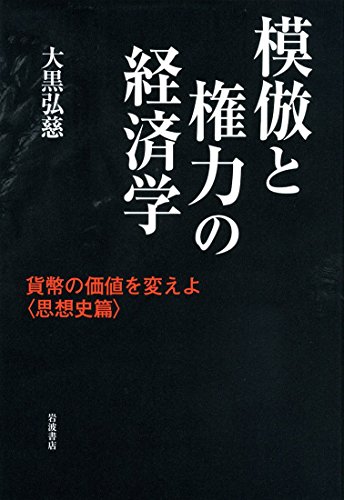1 0 0 0 OA 橋本努編『現代の経済思想』勁草書房,2014年,xvii+623頁
- 著者
- 大黒 弘慈
- 出版者
- 経済学史学会
- 雑誌
- 経済学史研究 (ISSN:18803164)
- 巻号頁・発行日
- vol.58, no.1, pp.169-170, 2016 (Released:2019-11-29)
1 0 0 0 OA 竹本洋・大森郁夫編著『重商主義再考』日本経済評論社, 2002, iv; 306頁
- 著者
- 大黒 弘慈
- 出版者
- 経済学史学会
- 雑誌
- 経済学史学会年報 (ISSN:04534786)
- 巻号頁・発行日
- vol.43, no.43, pp.104-105, 2003 (Released:2010-08-05)
1 0 0 0 OA ソーントン『紙券信用論』の可能性
- 著者
- 大黒 弘慈
- 出版者
- The Japanese Society for the History of Economic Thought
- 雑誌
- 経済学史学会年報 (ISSN:04534786)
- 巻号頁・発行日
- vol.32, no.32, pp.60-73, 1994 (Released:2010-08-05)
- 参考文献数
- 17
H. Thornton is often regarded as a minor immature Ricardo with regard to his quantity theory. But he should not be neglected as a mere ‘intermediate link’ between Smith and Ricardo, who narrowed the contents of the credit theory of Smith. While both Smith and Ricardo confused credit with money as a means of circulation, Thornton clarified the special character of credit money as a means of payment and attempted to apply the law of‘Necessary Amount of Money’ to credit money. These points of view were in a sense similar to Marx's.Thornton also investigated the interaction between money and production, and did not isolate credit phenomena from the production process. In doing so, he found that the optimal amount of money can be reached not in natural course of automatic adjustment mechanism of the market i. e. the Law of Reflux, but by means of flexible intervention by the Bank of England.Thornton's originality can be found in his analysis of the following two points. One is the discretionary control by the Bank of England through the operation of various political judgemets. The other is the refinement of the law of ‘Necessary Amount of Money’. This paper tries to explore Thornton's analysis of the nature and the basis of circulation of credit money, and thus tries to fill the ‘missing link’ between Thornton and Marx.


